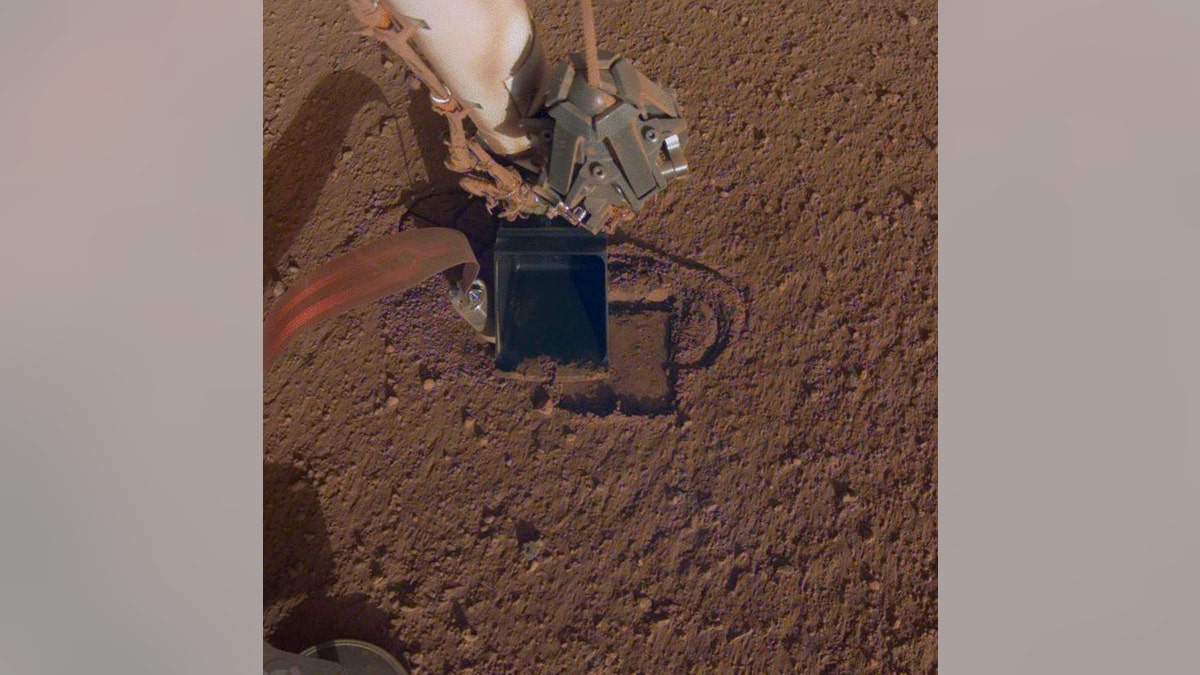
This October 2019 photo made available by NASA shows InSight's heat probe digging into the surface of Mars. On Thursday, Oct. 17, 2019, NASA says the drilling device has penetrated three-quarters of an inch (2 centimeters) over the past week, after hitting a snag seven months ago. While just a baby step, scientists are thrilled with the progress. (NASA/JPL-Caltech via AP)
The water that once flowed on Mars contained just the right ingredients to support life, scientists say.
Measurements by Nasa's Curiosity rover, which has been exploring the Red Planet since landing there in 2012, suggest the chemistry of its oceans would have been similar to those here on Earth.
Mars is among the places in the Solar System with the best chance of having once hosted life, with water - essential for almost all known forms of life - known to exist there in large quantities.
The ice on its surface contains enough water to cover the whole planet to a depth of 35 meters, and it is thought that billions of years ago a denser atmosphere and higher temperatures allowed vast amounts of liquid water to exist.
No evidence has yet been found that life ever existed on the planet, but scientists have recently looked to find out what its oceans contained and whether they could have supported life.
A paper published in the Nature Communications journal detailed measurements taken from sediment in the bed of a former lake in the so-called Gale crater.
The data suggests that the lakes would have had a pH - a measurement of the acidity of water - similar to that in the Earth's oceans.
That means the water could have just the write make-up to have supported any microbial life that formed on the planet.
The discovery doesn't bring scientists any closer to finding life on Mars, but it does suggest evidence of life that once existed there could be discovered before long.
The Curiosity is a car-sized Nasa rover launched in November 2011 that is currently on Mars to explore the Gale crater.
The probe arrived at the planet on August 2012 and touched down just 1.5 miles from its planned landing site after a journey of more than 350 million miles.
An investigation of whether water on the planet could have ever supported life was among the key goals of the mission.
It will also study the planet's climate and geology as well as its habitability ahead of an anticipated manned mission in the 2030s.
This story originally appeared in The Sun.
